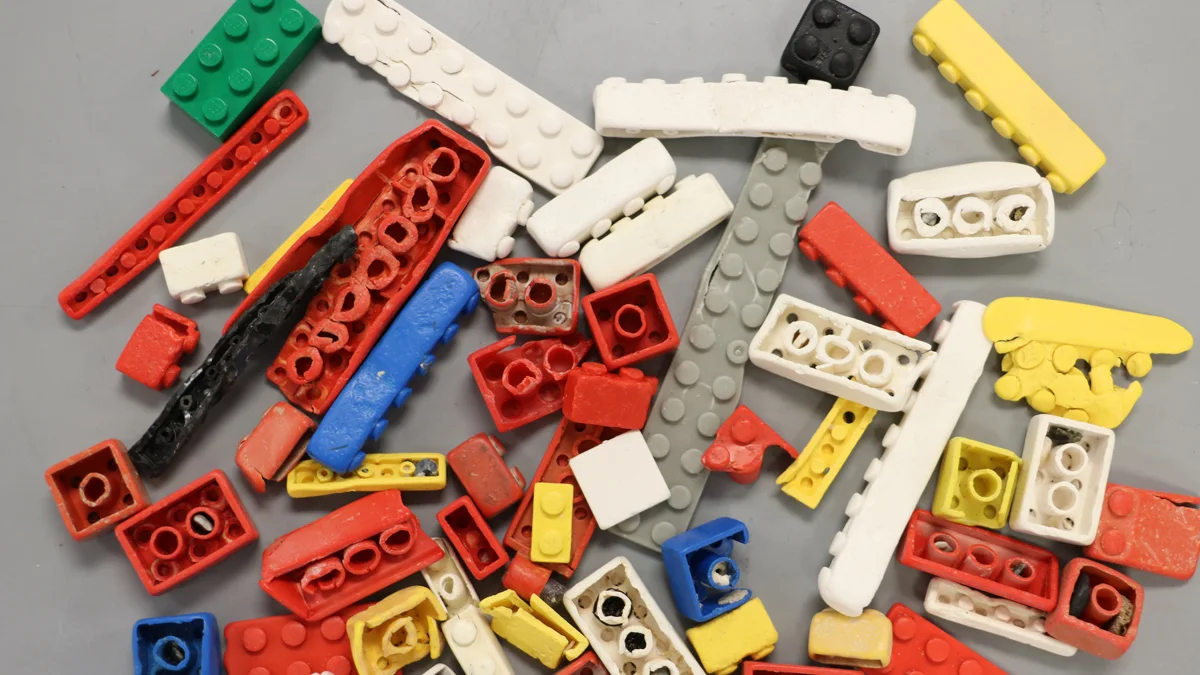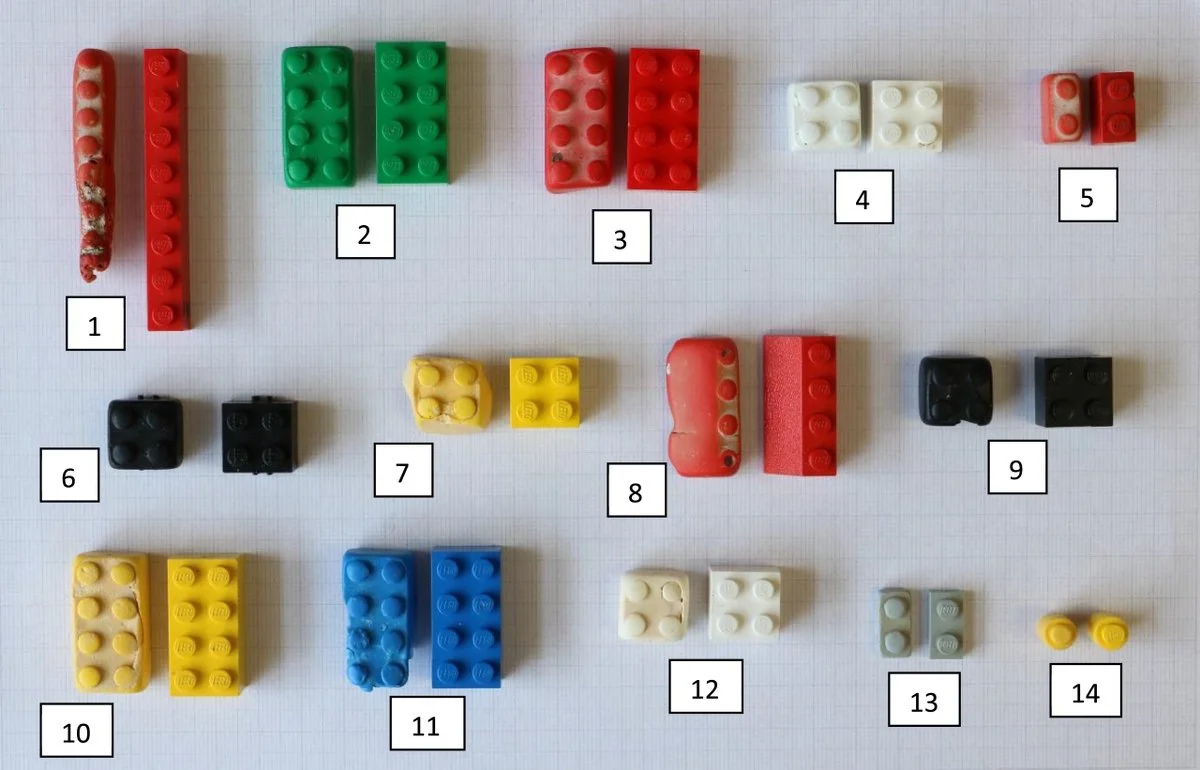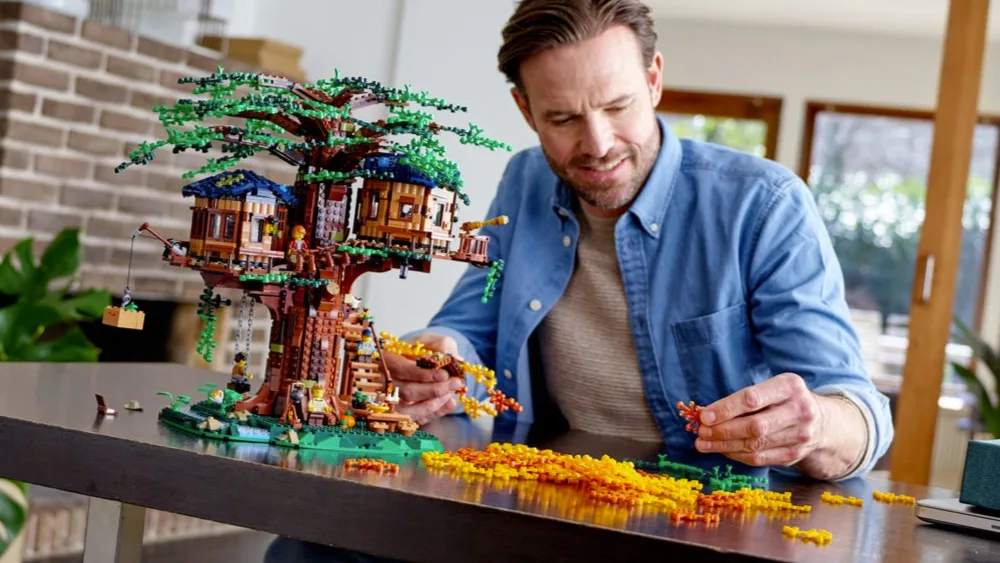
LEGO bricks could survive in the ocean for more than 1,000 years
A new study highlights the durability of plastic waste in the environment
LEGO is one of the most enduringly popular toys in the world. Still, its endurance becomes a problem when the bricks end up in the environment. A new study has found that discarded bricks can survive in the oceans for up to 1,300 years.
LEGO bricks are made from acrylonitrile butadiene styrene, also known as ABS plastic. This is the same plastic that goes into making many of the products we use in day-to-day life - kitchen appliances, auto parts, pipes, sporting equipment, luggage, and most certainly toys. It is a durable material that guarantees the products it is made into will last.
When these products are thrown out, or just lost (in the case of many toys), that durability is not so desirable.
A study published this week, led by Dr. Andrew Turner, an Associate Professor in Environmental Sciences at the University of Plymouth, has shown that the ABS plastic used to produce LEGO bricks can last for quite some time.
"LEGO is one of the most popular children's toys in history, and part of its appeal has always been its durability," Turner said in a press release. "It is specifically designed to be played with and handled, so it may not be especially surprising that despite potentially being in the sea for decades, it isn't significantly worn down. However, the full extent of its durability was even a surprise to us."
The study began with bricks that had washed up on beaches in South West England, which had been collected by groups such as Rame Peninsula Beach Care and the LEGO Lost at Sea Project.
Although any source of ABS plastic could have been studied, using LEGO bricks offered a unique opportunity.
Cornwall shorelines are particularly good for collecting LEGO that has spent time in the ocean. Just over 23 years ago, the container ship Tokio Express was struck by a rogue wave off the coast, causing 62 of its cargo containers to be dumped into the sea. One of those contained an estimated five million pieces of LEGO.
According to a Cornwall Live article from 2018, "The ship's manifest revealed that 4,756,940 pieces fell into the sea, including 3,178,807 which were light enough to float."
With bricks washing up on shore even more than 20 years later, it represented a concentrated source of ocean plastic for the researchers.
Furthermore, with the amount of LEGO stored away in collections, it would be possible to directly compare these worn and degraded bricks with ones that had been produced at the same time, but had been protected from the environment for all of that time.
Comparing the samples collected from the beaches to blocks of the same shape, colour and age that had been stored away, unused for years, Turner and his co-authors catalogued the wear and degradation they had suffered.

A comparison of beached LEGO bricks with stored bricks of the same type. Credit: Turner, et al.
Based on the damage, fading and 'fouling' (accumulation of 'gunk' on or in the pieces), they found that the bricks could survive anywhere from 100 to 1,300 years in the ocean.
"The pieces we tested had smoothed and discoloured, with some of the structures having fractured and fragmented, suggesting that as well as pieces remaining intact, they might also break down into microplastics," Turner said. "It once again emphasizes the importance of people disposing of used items properly to ensure they do not pose potential problems for the environment."
BECOMING MORE SUSTAINABLE
Although most LEGO products are currently still made from ABS plastic, the Denmark-based company has been using a new bio-based polyethylene plastic, made from sugarcane, for some of its elements since 2018.
According to the company's website: "More than 80 LEGO elements are made from sustainably sourced polyethylene. Although these represent just 2% of the 3,600 elements available for designers, it is the first important step out of many on the journey towards using sustainable materials by 2030. We are continuing to experiment with many different materials as we expect the LEGO bricks of the future could be made from both plant-based and recycled sources."

All of the plant elements of LEGO's new Treehouse model are made from sustainably sourced polyethylene plastic. Credit: LEGO Group
In addition the company has already acted in several ways to reduce their carbon footprint and environmental impact. They have improved the energy efficiency of their operations, installed solar panels and supported off-shore wind projects, sought solutions for the impacts of their supply chains, and they are working to ensure that no waste from their operations ends up in any landfills.
The next stage is the development of new materials, or new methods of recycling materials, to make their products entirely sustainable within the next 10 years.
PLAY IT FORWARD
On our end, it is fairly easy to keep LEGO bricks and other elements from ending up in landfills and the ocean.
Given how enduring these products are, LEGO can be something that you or your children never truly lose interest in. If so, great! If it is put aside at some point, though, the easiest thing to do is simply store it away until interest peaks again (even if that is years or decades later). It also becomes easier to pass it on to the next generation.
Selling is another option. There are online sources for buying and selling LEGO sets and individual LEGO elements. In most cases these products retain or even surpass their original value. Some studies have even shown that investing in LEGO sets can beat out stocks, bonds or even gold.
Although the ABS plastic used in LEGO is easily recycled during the manufacturing process, putting the bricks in your recycling bin will probably just result in them being funnelled towards a landfill. The better option is to donate them.
Consider gifting them to a local school, where the children there can use them to build better cognitive abilities during play. In Canada, Who Gives a Brick is a Vancouver-based effort to reuse LEGO, by ensuring that donations get to less privileged children, who don't have access to these toys otherwise. In the United States, collections can be boxed up and sent off, via the LEGO Replay website, to be distributed by an organization known as Give Back Box.
Sources: University of Plymouth | Cornwall Live | LEGO Group











